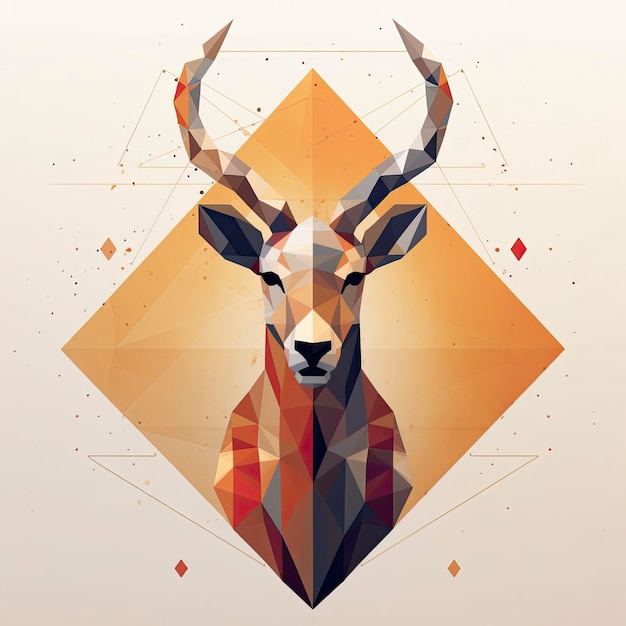Is becoming a unicorn
really all what it takes?
The entrepreneurial zoo of Europe
and beyond
Ever since the word ‘unicorn’ was first coined by Aileen Lee in 2013, the main goal of privately held startups has been to become this mythical animal. The term was chosen to represent the statistical rarity of such success because, to achieve the status of a ‘unicorn company’ its value has to reach over $1 billion just within their first decade of operation.
But it seems that the unicorn vision has become outdated, and entrepreneurs are advised to seek other options. Let’s inspect how the entrepreneurial zoo has broadened with other desirable animals that a startup should strive to resemble!
What animal your startup resembles
in 2023
Turning into a unicorn was the ultimate ‘nirvana’ moment for both venture capital and startup founders. The identity of the first ever Unicorn is still a debated topic, naming Google, Facebook and Airbnb in the process. Considering that the now Meta company, Facebook was the first to reach the $1 billion threshold out of the three – in a record time of 396 days – it makes sense to hypothetically crown it with the banner of the first unicorn startup.
Speaking of the startups that now hold the title, there are more than 1200 unicorns as of July 2023, according to the list of CB Insights. The largest unicorns include ByteDance, DiDi, Stripe, and SpaceX.
However, a few critics claim that it is not favourable to haunt these mythical creatures because it requires a growth-at-all-costs mentality that undervalues, and sometimes downright ignores, unit economics, not to mention all the unquantifiable factors that make businesses thrive.
‘Signing up for Silicon Valley’s unicorn-hunting strategy is a bit like mortgaging your home to buy three new homes,’ said Alexandre Lazarow, a venture capitalist at Cathay Innovation.
In the past pandemic situation, Lazarow advised founders to aspire for other, more realistic mascots. Leave behind the unicorn hunt and aim to become a camel, a zebra or a gazelle.
We are here to guide you on a tour to the entrepreneurial zoo!
The
Camel:

According to an online tracker, Layoffs.fyi almost 220 000 tech startup employees have lost their jobs in the first half of 2023. Although not in every case, but the necessity to lay off employees often stem from the company’s struggle to operate. However, there is an animal that is well-known to endure long dry seasons with little to no sustenance. Camels have the ability to survive without water up to 10 days, and these characteristics make them unique and resistant animals.
Companies that gained this marker did so by sharing these qualities. In fact, those businesses are able to maintain their activity regardless of whether they gain access to financing or not. Unlike other companies, camel startups are not affected deeply by adverse times. And this was also proven a favourable characteristic during the not foreseeable COVID-19 pandemic.
If you wonder what makes a camel startup so good at adapting, here are the answers: they have proper added value that they offer, moreover their design and development of contingency plans make them a good survivor. Furthermore, important characteristics are their low fix costs and their focus on organic growth. Finally, their diversification of their business model and their long-term vision help them get through tough times.
Be a Camel company like…
Amazon. A good example for a camel is the rightly famous American company, that could operate at a loss for many years. The foundation of this success was their willingness to re-invest their heavily into their own growth, research and development.
We can also mention the experience management software company, Qualtrics from the U.S., a business that used their profits to fund growth for many years, scaling at a reasonable rate and declining early interest from VCs. The key strategy for them was thinking in long-term because they understood that building a successful business starts with a strong foundation that is built to last.
Why is a Camel better than a unicorn?
It is important to understand that we are weighing up two totally different business models, so comparing them is not an easy task. But it is common knowledge that Camels depend less on venture funding than unicorns. While unicorns rule their market with massive customer potential and almost exclusive control, camels get through critical times and crisis without any major effort and they are hand-picking their investors, as to only choose the perfect match.
All together we can say that camels take a diverse growth path than a unicorn, by choosing lower-risk options and fueling their processes with subsidized or free product.

The
Zebra:
The ‘Zebra movement’ originally started in 2017 and has since grown into a quickly growing community of entrepreneurs. These business founders decided to reject the venture capital investment model and support the creation and discovery of alternative funding methods. An organization from the U.S., Zebras Unite, was started by four women: Astrid Scholz, Mara Zepeda, Jennifer Brandel, and Aniyia Williams. Their aim was to persuade other company founders to establish zebras instead of unicorns.
‘Part of what makes me a zebra is I don’t actually want to give [an investor] a part of my company. Ultimately, being a zebra means adopting a ‘holistic ethos’, make profits and are also solving … problems more relevant to society than, you know, Tinder for dogs.’ Scholz said.
Altogether, Zebra companies share a few traits with the animal: they are both black and white, meaning that they are profitable but also improve society. Not only do they not sacrifice other zebra startups for success, but they are also cooperating with each other, banding together in groups to protect one another. Their individual input results in stronger collective output.
On the other hand, that does not mean that Zebra startups are nonprofit, focusing on sustainability and social justice. It rather means that these businesses have roots in their leaders’ personal experience and visions.
Be a Zebra company like…
Kheyti. An Indian zebra company in the agri-tech field, that devised a means to create economical modular greenhouses that produce 7 times more food while using 90 percent less water than regular greenhouses. What sets this startup apart is that the initial idea was to conserve water in areas facing water shortage and support farmers’ economical state.
Why is a Zebra better than a unicorn?
Although startups – and thus unicorns as well – tend to possess the so-called ‘halo effect’ – according to a research by Kellogg School – in reality they are more likely to be far from ethical righteousness. For a startup to reach the glorified state of a unicorn, it has to take steps towards and make decisions regarding how it will reach this position, more often than not having to sacrifice key aspects of a mindful business, adapting unsustainable practices. The All-or-nothing mentality that comes with the unicorn goal-centred thinking can result in intensified competition making the market unviable for smaller businesses. It may lead to distortions of competition in the market which has the potential to raise social issues. That is why it is important for startups to prioritize other aspects than financial gain, which is exactly what Zebras do.
The
Gazelle:

A gazelle company is a high-growth company that has been annually increasing its revenues by at least 20% for four years or more, starting from a revenue base of at least $1 million. This rapid growth pace means that the company has more than doubled its revenues over only a four-year period.
However, gazelle companies are not identified by their size. They can range in size from small companies to very large enterprises because the main symbol of a Gazelle is the fast sales growth. Although not all of them, in general they belong to the smaller end of the scale. To name an exception, Apple only became a gazelle when it introduced the iPod in 2001 after being already in business for 25 years. Majority of the Gazelle companies are publicly-traded companies, meaning investors can buy and sell their shares.
The characteristic field for Gazelle companies is the technology industry but they can also appear in food, retail and beverage. We can say that a Gazelle is useful for the society (like Zebras) because they create jobs and are credited for being among the best sources of new employment for the economy. David Birch estimated that the Gazelles, approximately 4% of U.S. companies, were responsible for 70% of all new jobs.
The main factors that explain their success are competitive advantages based on human resources, innovation, internationalization, the excellence in processes and a conservative financial policy.
Be a Gazelle company like…
Dell or Microsoft. They were all Gazelle companies at the beginning of their operation, and they are undeniably an excellent example to follow. X, formerly known as Twitter can also be mentioned, as right in the beginning it also was a Gazelle company. X even offered its early employees shares to boost morale, with the hope that in the future the shares will be worth a lot more. Many recalibration happened at X since then, but the value of the company still stands at a whopping $20 billion as of today.
Why is a Gazelle better than a unicorn?
Gazelles are certainly not as obsessed with growth as a unicorn. They don’t push their limits as hard, hoping that progress will naturally happen as their customer base increases over time. Instead of focusing on growth, they concentrate on creating qualitative products and services.
Employees might also think that a Gazelle company is a better choice when it comes to the workplace in general. At a Gazelle company people will feel more valued at work, opposed to a Unicorn company, where workers might feel they are only utilised for the company’s success.
There are many paddocks in this zoo
Unicorns are swift to gain success, camels are resilient, zebras are equally good financially and societally, and gazelles are successful without sacrificing the company’s humane side. But beside these already discussed animals, there are many more kinds you could be choosing from, such as mosquito, donkey, or cockroach, but some even mention bear, cheetah, and rhino.
Mosquito:
The mosquito as a term for startups was used first by Paul Graham in 2004. Back then he used it to identify all startups with the insect. But with the widened entrepreneurial zoo, we can spot the difference which makes them unique. The mosquito startups’ – just like the insects’ – only goal is to strike, not wasting energy on defence. Making them a tenacious and tough opponent to face or get rid of.
Donkey:
A donkey is basically a unicorn, that is overvalued but underperforming in reality. Although it gained success by reaching the mythical heights of a unicorn startup, the success was not complete: whether it be numbers in finance or a totally different area, there is an aspect in which the donkey struggles to perform. This faulty state can be accounted for incorrect calculations at the beginning of the startup’s operation. The name most likely comes from the thought: from afar it looks like a creature from a fairy-tail, but up-close it becomes clear that it is no more than a commonplace donkey.
Cockroach:
Cockroaches are not known for their adorable looks or charming personalities: a great deal finds them downright hideous. Which makes it impossible for them to win a place on the podium of the most beloved insects. Yet, despite all the negative connotations the cockroaches’ ability to survive in dire conditions – even a nuclear bomb – impresses many. A cockroach startup shares this trait: they are resilient, easily getting through obstacles. Although their growth tends to be slower due this strategy, it makes the startup long-lasting.
Despite their lack of glamour or popularity, these animals possess desirable qualities which makes the effort to become such company well worth making.
To give our 5 cents: the fox
Often foxes are associated with characteristics such as cunning, smart, and brave, thanks to their clever ways to outsmart farmers or people in general. They even earned to have an idiom that carries their name: sly as a fox. In the business world for one to be crafty and take risks is necessary, yet there are a few examples which bear the palm. Reddit was just starting out in 2005, when the developers realized that they are getting no visitors – which was not unusual for a webpage at the time, but it didn’t help their case. The founders had found a tricky way to gain more attention: they started to make fake accounts and make up stories to discuss, even having debates with each other. Eventually others noticed, and real users started to use the website. Now they stand as one of the biggest pages for online debate. What a clever move!
Thus, we would like to award such startups with the title of the cunning fox for their intelligence and adaptability.
So…which animal is the Beary Best?
Having these terms helps us sorting out the initially hectic world of the startups, making them easier to categorise. But even though it helps new startups to get an understanding what to strive for, it does not offer any guideline on how to achieve it, making them out to be only fun and descriptive titles. However, in a world as fast-changing and evolving as that of startups, it is perhaps better not to have a restrictive set of guidelines that can hinder development.
If you would like to know more about the world of startups, or have any questions regarding starting one, do not hesitate to contact us, or book consultation with one of our colleagues by clicking here.







